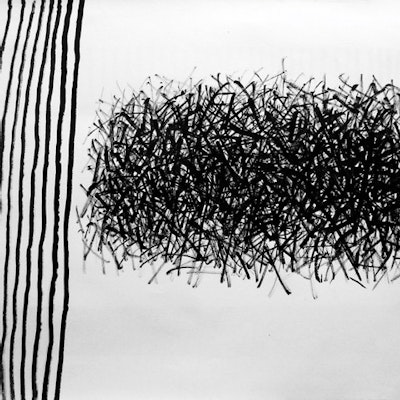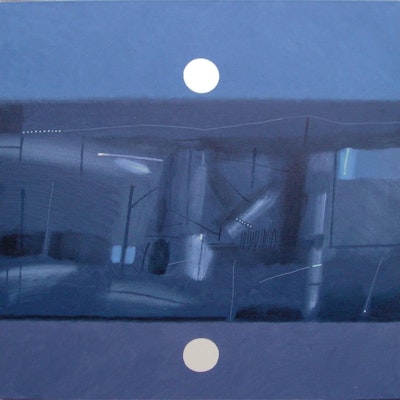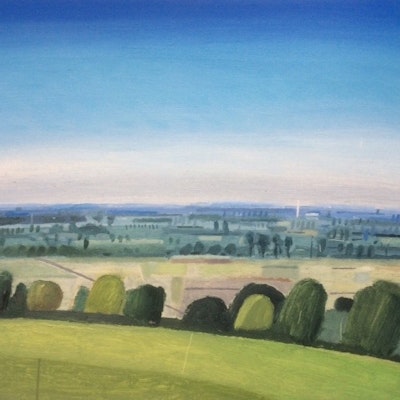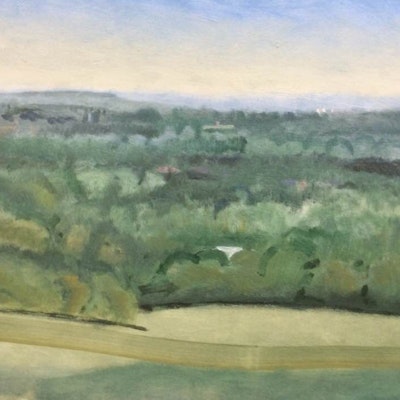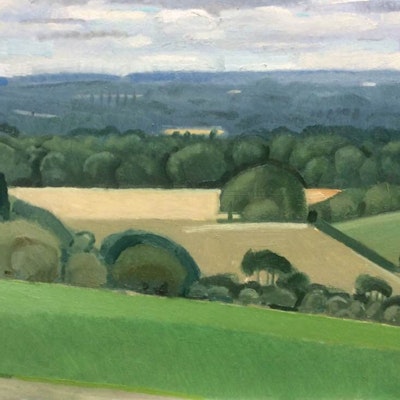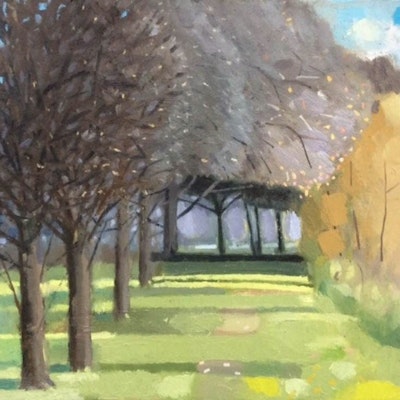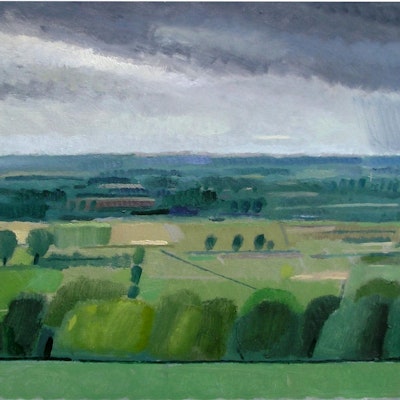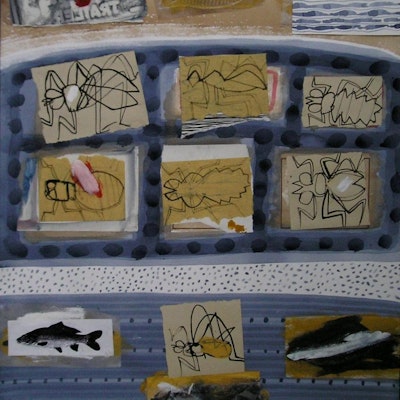Andrew Walton
From December 1 2019 at CAREY BLYTH
8 Woodstock Road Oxford OX2 6HT (wed-sun 11-5 pm)
ANDREW WALTON
Otmoor remains a ‘place apart’ – a quiet and fragile haven for marsh harriers, merlin and peregrine, owls, thousands of ducks, teal and widgeon, and murmurations of starling that coil and roll like polar bears in the winter skies. Andrew Walton moved as a child to Noke from the deprivation of post-war London to a wild wetland of reedbeds, meadows and birdsong.
Recorded in the Domesday Book, Otmoor (Fen A Ota) provided grazing, hunting and foraging for all until Enclosure in 1815 which prompted the Otmoor Riots (1829-30). Today two thousand acres of marshland create a wilderness nature reserve - peripheral wooden walkways ensure an uninterrupted haven for the rhythms of nature that play out under high skies. In winter you hear only the breath of murmurations overhead and haunting calls of water birds.
Walton’s ink drawings are distinct from his oils that capture full colour panoramic views of Otmoor from Beckley and Elsfield. His drawings in black and white are up-close and musical in sensibility, from the titles to the marks he makes on the page. Hog Hole is such a creature. One can hear the rough movement and snorting of the wild hog as he busies himself in mud amongst the reeds.
Walton is fluent with different styles of painting that he selects to achieve his goal. He is master of paring down, so although at home with a contemporary, figurative landscape panning across the moor in oil on board, he shifts seamlessly to an abstracted translation at whim - celebrating the broad stretch of a generous horizon and the rustle of wind in reeds, in no more than a few lines, dots and scratches he creates wonderful minimalist paintings in ink on paper.
Jenny Blyth 2019
OTMOOR : MOONLIGHT & MYTHS at Art Jericho (now closed)
21 APRIL - 29 MAY 2016
Andrew Walton: “I was born just after WW2. My parents had moved to Noke when they married in the early 1940s. We lived in a tiny cottage totally lacking modern amenities. No electricity, water from the well and an earth loo in ‘The Elm Barn’, a shed with a grand name, all set in a third of an acre of orchard. An artist’s retreat from the hurly burly of war torn London, this was my world - apple trees to climb, a stream to splash in, a duck pond beyond the gate where my brother and I launched catamaran boats whittled from elder sticks. The village was a place apart - a road petering out on the edge of the moor, smelling of cows and cow parsley, deep ditches fringed by pollarded willows, and a huge sky. This is the place my life started.”
Andrew Walton has spent the past two years retracing the Moor of his childhood years. Otmoor remains a ‘place apart’. Recorded in the Domesday Book, it is a wild and quiet refuge, a nature reserve with wooden walkways that ensure an uninterrupted haven for the rhythms of nature that play out under high skies - the breath of murmurations overhead, and haunting calls of water birds. A landscape of myth and wildness has been the impetus for Walton’s paintings and poems by David Attwooll. ‘Walking friends’ of many years, painter and poet have created work that explores and celebrates an ancient landscape.
Walton’s work is playful. He is completely fluent in different styles of painting that he selects to achieve his goal. He is master of paring down, so although at home with a classically contemporary, figurative rendition of views across the moor in oil on board, he shifts seemlessly to an abstracted translation at whim, celebrating the broad stretch of a generous horizon and the rustle of wind in reeds, in no more than a few lines on flat fields of colour - minimalist paintings in oil on canvas.
Walton’s portfolio of Otmoor is a treasure trove. Capturing the ever-changing beauty of the moor, he pitches us from daylight to dusk in oils and watercolour, and across moonlit reeds hatched onto paper. He is as strong in monochrome as in high colour, articulate in abstraction as in figuration, a truly gifted and inquisitive artist with his heart immersed in landscape… Jenny Blyth 2016
